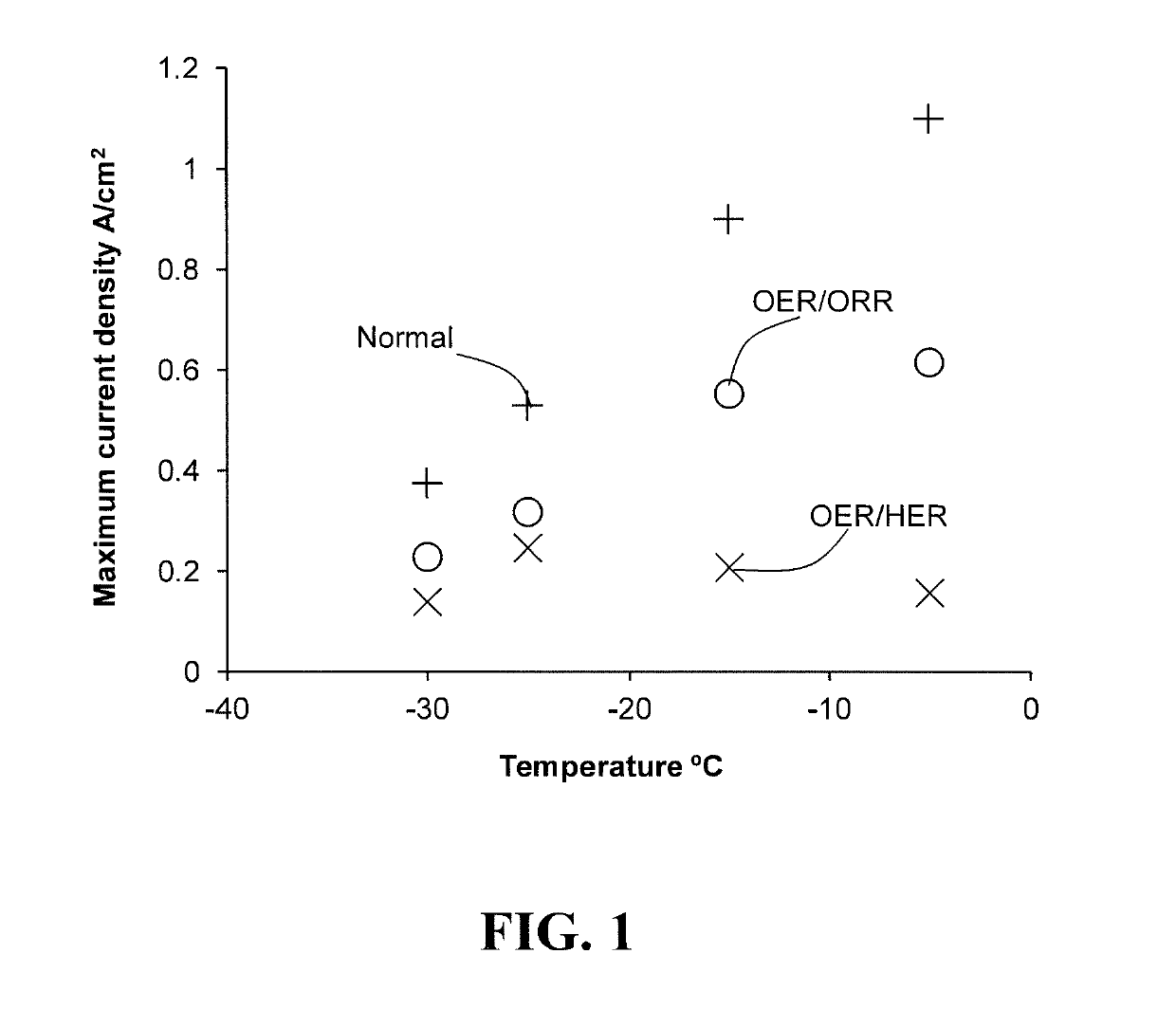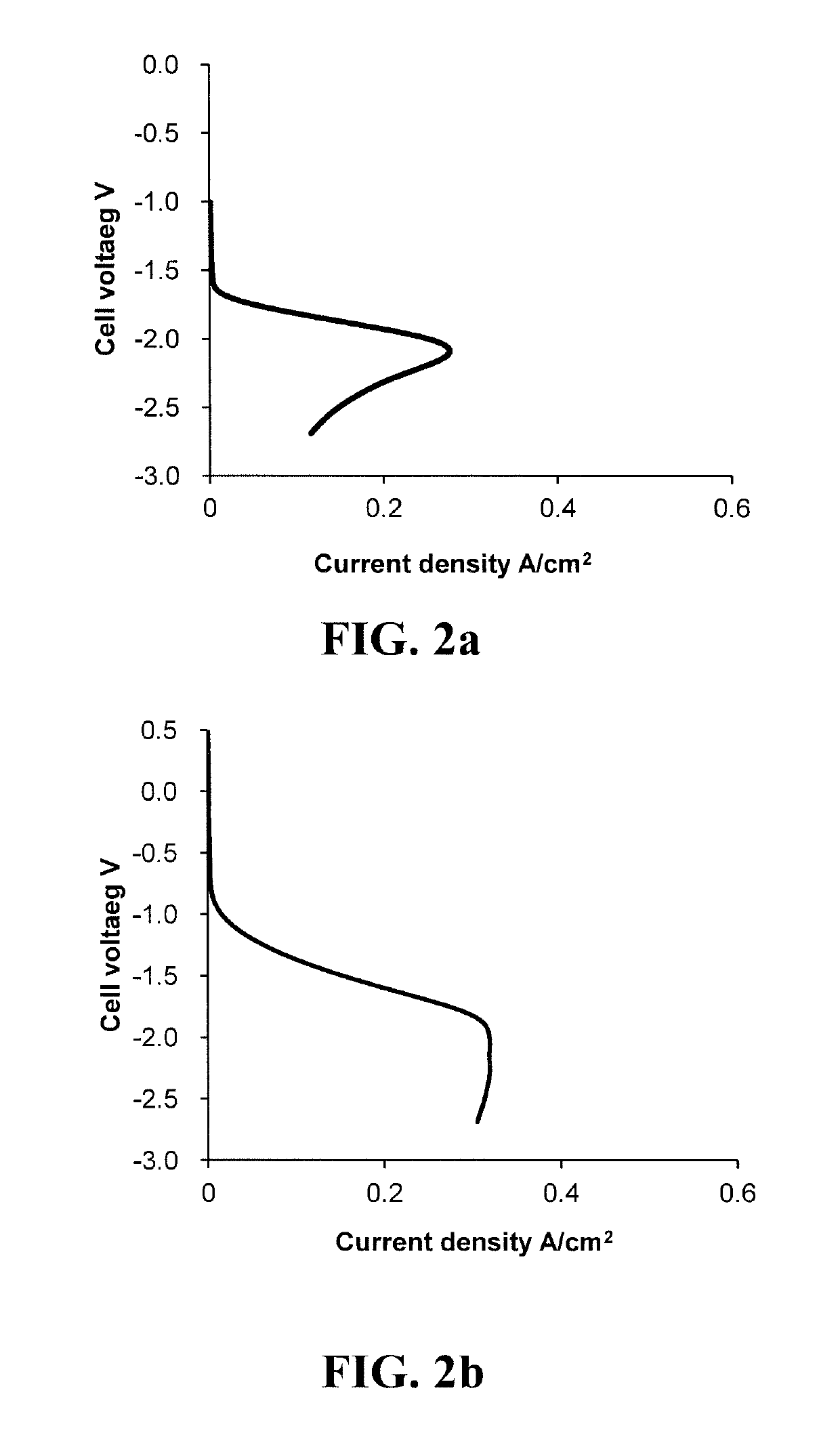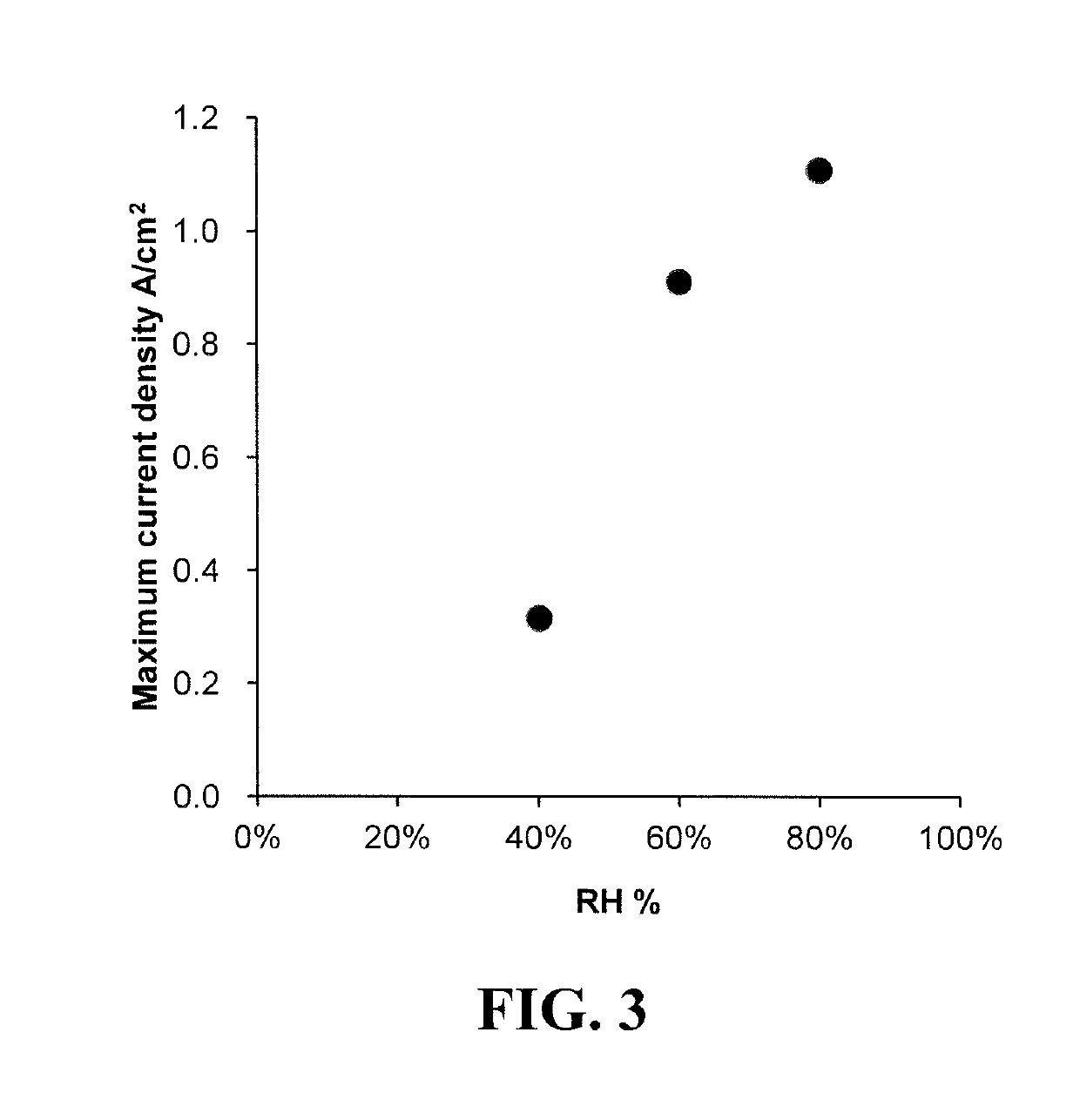Below freezing start-up method for fuel cell system
a fuel cell and system technology, applied in the field of improved methods for starting up a fuel cell system, can solve the problems of ice formation, ice formation in the electrochemically active areas of the fuel cell, and ice formation of cours
- Summary
- Abstract
- Description
- Claims
- Application Information
AI Technical Summary
Benefits of technology
Problems solved by technology
Method used
Image
Examples
examples
[0053]An experimental fuel cell was prepared using conventional components and construction techniques. Then, the fuel cell's maximum current density was determined under various conditions as a function of temperature and of relative humidity.
[0054]The experimental fuel cell comprised a catalyst coated membrane (CCM) sandwiched between two carbon fibre gas diffusion layers (GDLs). The membrane electrolyte in the CCM was a conventional Nafion® perfluorosulfonic ionomer membrane. The anode comprised both a HOR and an OER catalyst, namely carbon black supported platinum and iridium oxide powder respectively. The cathode comprised an ORR catalyst which was also carbon black supported platinum. Flow field plates were applied to each of the GDLs and the assembly was completed in a conventional manner. The cell was then conditioned by operating at a constant current density, with hydrogen and air as the supplied reactants for several hours to obtain a stable steady-state performance. Maxi...
PUM
 Login to View More
Login to View More Abstract
Description
Claims
Application Information
 Login to View More
Login to View More - R&D
- Intellectual Property
- Life Sciences
- Materials
- Tech Scout
- Unparalleled Data Quality
- Higher Quality Content
- 60% Fewer Hallucinations
Browse by: Latest US Patents, China's latest patents, Technical Efficacy Thesaurus, Application Domain, Technology Topic, Popular Technical Reports.
© 2025 PatSnap. All rights reserved.Legal|Privacy policy|Modern Slavery Act Transparency Statement|Sitemap|About US| Contact US: help@patsnap.com



